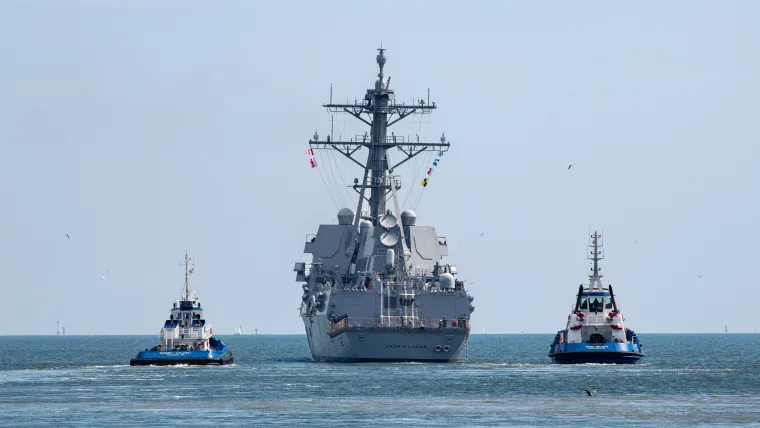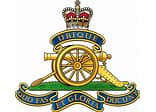Only two weapons can destroy the world and only two countries may choose to do so. Hypersonic missiles and laser weapons, China and the United States. The two world powers have been at each other’s necks for the longest and now, they may finally strike, as the US finally responds to China’s unending threats!
Following a recent summit alongside President Joe Biden and Japanese Prime Minister Fumio Kishida in Washington, Marcos has provided insights into potential scenarios involving the US, a treaty ally of the Philippines, amid escalating tensions between Manila and Beijing over the South China Sea dispute.
The recent clash in March saw two Chinese coast guard ships unleash water cannons on a Philippine vessel, resulting in injuries to three Filipino navy personnel and significant damage to the boat. China asserts extensive territorial claims over the resource-rich South China Sea.
Biden’s recent reaffirmation of defence commitments to Asian allies reflects concerns regarding China’s increasingly assertive behaviours. Since assuming office in 2022, Marcos has actively defended the Philippines’ claims in the contested waters while strengthening security ties with the US and Japan.
Under the 2014 Enhanced Defence Cooperation Agreement, the US gained access to four additional Philippine sites last year, supplementing the initially designated five military bases. These new sites are strategically located near Taiwan and the South China Sea.
Marcos clarified on Monday that while the Philippines has no immediate plans to grant the US access to further bases, discussions are underway for a reciprocal access agreement with Japan, facilitating mutual military visits.
Moreover, Marcos aims to leverage the deepening defence relations with the US and its allies for broader economic advantages. One potential avenue being explored is oil and gas exploration in the South China Sea, where US companies may be invited to participate.
Despite an agreement between the Philippines and China to resume joint exploration talks in January last year, differences persist regarding the governing laws for such projects. Marcos emphasized the importance of determining the applicable law, asserting that exploration within the Philippines’ exclusive economic zone should be conducted by the Philippines. Meanwhile, exploration in non-conflict areas remains a possibility for the Philippines.
Russian forces are continuing to suffer losses in Russia’s war of aggression against Ukraine, with 830 soldiers, 47 armoured combat vehicles, and 22 tanks lost over the past 24 hours alone.
Source: General Staff of the Armed Forces of Ukraine on Facebook
Details: The total combat losses of the Russian forces between 24 February 2022 and 10 April 2024 are estimated to be as follows [figures in parentheses represent the latest losses – ed.]:
- 450,080 (+830) military personnel;
- 7,132 (+22) tanks;
- 13,667 (+47) armoured combat vehicles;
- 11,404 (+18) artillery systems;
- 1,040 (+1) multiple-launch rocket systems;
- 753 (+0) air defence systems;
- 347 (+0) fixed-wing aircraft;
- 325 (+0) helicopters;
- 9,070 (+37) strategic and tactical UAVs;
- 2,067 (+2) cruise missiles;
- 26 (+0) ships and boats;
- 1 (+0) submarines;
- 15,248 (+67) vehicles and tankers;
- 1,876 (+8) special vehicles and other equipment.
- The information is being confirmed.
Almost all the ballistic missiles and drones Iran launched at Israel in an unprecedented attack late Saturday were intercepted and failed to meet their mark, according to Israeli and American officials, highlighting the formidable, and multi-layered missile defense deployed by the two allied partners.
Most of the more than 300 Iranian munitions, the majority of which are believed to have been launched from inside of Iran’s territory during a five-hour attack, were intercepted before they got to Israel, more than 1,100 miles (1,770 kilometers) from their launch points.
Israel’s military said Sunday that “99%” of projectiles fired by Iran were intercepted by Israel and its partners, with only “a small number” of ballistic missiles reaching Israel.
CLICK LINK to continue reading this article
How Israel and allied defenses intercepted more than 300 Iranian missiles and drones | CNN
We have received advice of the death on 8 April 2024 of Raymond Mitchell Watt. He was 78. Ray was a National Serviceman who served in Vietnam with 108th Field Battery of 4th Field Regiment from June 1967 until October 1967.
We have also been advised of the death on 11 April 2024 of Paul Vincent O’Hara. He was 78. Paul was a National Serviceman who served in Vietnam with 108th Field Battery of 4th Field Regiment from June 1967 until October 1967.
Both Ray and Paul were gun tractor drivers in 108th Field Battery and both arrived and departed Vietnam on the same date. They also shared a hoochie while in Vietnam.
RIP Raymond Mitchell Watt and Paul Vincent O’Hara
Peter Bruce, OAM
Obituary Resource Officer
RAAHC
pjbruce8@bigpond.net.au










